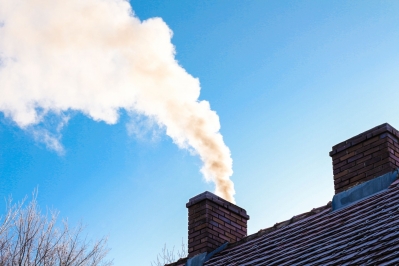The media is currently full of articles about the property market which is currently experiencing a surge in demand as people seriously reconsider their home location options. Working from home, access to the countryside, access to the best schools, properties with home offices and gardens are certainly at the top of buyers’ ‘must have’ requirements.
There are lots of factors to consider when choosing your perfect property. One factor, however, that hasn’t been at the top of most people’s lists yet, but is sure to have an increasing impact on their choice in the years to come, is the air quality of the area.
Research has shown that one in four UK homes are surrounded by air pollution exceeding safety limits set by the World Health Organization.
The advent of the ‘air pollution postcode checker’ will send ripples through house-hunting, real estate and property-finding communities alike. Carbon monoxide, nitrogen dioxide and nitrogen oxide are just some of the harmful gases which can contribute to air pollution, affecting the environment and public health. Simply put, the growing problem of air pollution in major cities may cause many people to prioritise the quality and cleanliness of the air in the city or town they live in.
What is an air pollution postcode checker?
Researchers at Imperial College London used computer models to produce estimated concentrations of the levels of toxic pollutants and the results have been used to produce a national database, where people can input an address to receive a rating of low, medium, significant, high or very high, with anything above ‘medium’ meaning the address exceeds the limit for a pollutant.
 Pollutants are the tiny particles – mostly from fossil fuel burning – nitrogen dioxide from diesel vehicles, and noise and light. Several health organisations are pushing for estate agents and property websites to disclose pollution levels when advertising properties.
Pollutants are the tiny particles – mostly from fossil fuel burning – nitrogen dioxide from diesel vehicles, and noise and light. Several health organisations are pushing for estate agents and property websites to disclose pollution levels when advertising properties.
Though it can take several different forms, the basic principle of an air pollution postcode checker means that prospective buyers can use data on air quality to inform their decision about whether or not to go ahead with a property. Two of the most widely reported of these are the BBC’s Pollution Postcode Checker (earthsense.co.uk) or addresspollution.org, both websites require a postcode to be entered for data to be found on the air pollution levels in the immediate surrounding area.
A medium rating of 2 or 3 would indicate a likely chance of levels exceeding legal limits, worsening at times of busy traffic, while a rating of 4 or 5 means the property’s surrounding area greatly exceeds the legal limit. Postcodes of many properties in central London, for instance, provide a rating of 5 on the air quality scale. This all sounds scary, but the good news is that free access to air quality reports means that you can assess the quality of a home before committing to a purchase in a badly-rated area.
What does this mean for property searches?
There are two main effects of a service providing air quality reports for house-hunters. The first of these, of course, is an increased awareness for the buyer about the air quality of their prospective home, influencing their decision to buy the property. Particularly for families with young children or elderly members, this information could be a major factor in your choice of property.
The second influence of this air quality postcode checker in property finding is a potential reduction in the sale price of a home, some experts think that pollution information will have a strong impact on property prices in the future alongside the energy efficiency of your home.
The Department for Environment, Food and Rural Affairs (DEFRA) recommend that the regions which are the least polluted typically tend to be open spaces or coastal regions but it may not be so simple!









